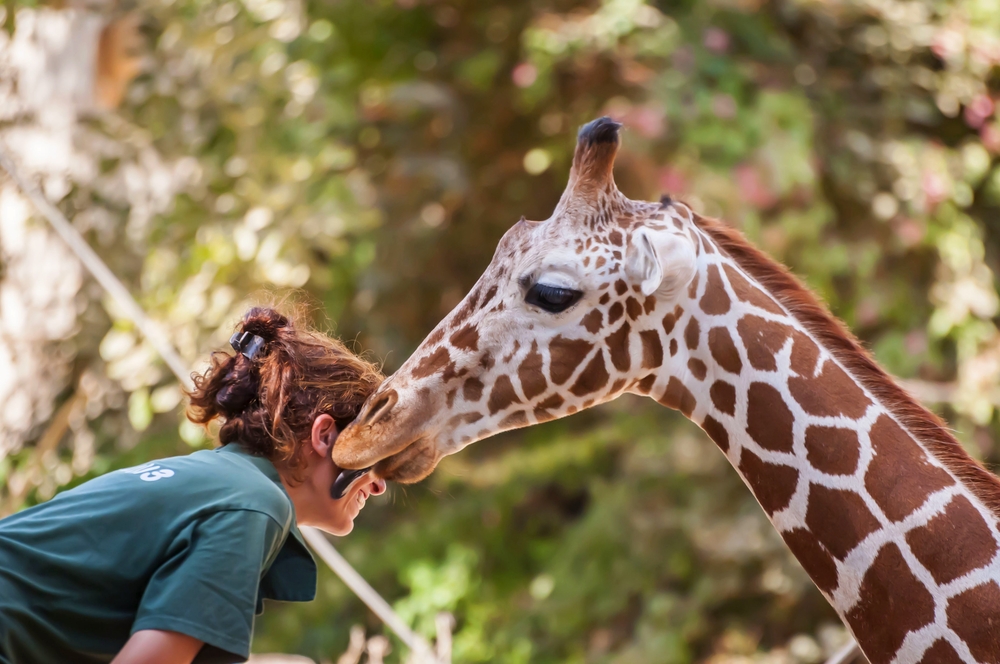New OSU center explores relationship between animals, humans

If you house a bunch of roosters together like a frat house off of North High, they won’t outwit their biology and learn to lay eggs.
This was the dilemma phoned in to Dr. Kelly George by a local backyard chicken cooper whose new flock had remained eggless for weeks after the purchase. Recalling the story, Dr. George smiles with a both a sense of irony and empathy.
“Because they didn’t know how to sex a bird, they got all roosters, which they couldn’t legally have in the city limits.”
Dr. George is Co-Director of a new center in the Department of Animal Science at OSU, the Center for Human-Animal Interactions Research and Education (CHAIRE).
CHAIRE’s mission is to study a brood of topics including human welfare, animal welfare, companionship and conservation science – all in relation to human-animal interaction. Almost anything that relates human and animal health is fair game for research, even backyard chicken debacles.
However, Dr. George chose not to formally investigate backyard poultry raising in this instance, unfortunately for those of us wondering what happened to that rooster coop stuck in an eternal Saturday-is-for-the-boys chant.
But, she sees her anecdote about illegal rooster operations as a analogy of CHAIRE’s impetus. That is, our encounters with animals are significant and they aren’t always even realized.
“We are very, very fortunate to be here. We sit in a rural-urban interface. Right here in Columbus. I go to farms everyday, and yet I also sit in an office. I can go to the zoo. I have lots of different interactions with animals. And so does everyone in the neighborhood as they drive through Lane and Kenny where they see a dairy, or see our equine facility on Sawmill.
There are lots of different ways people are affected by animals every day, even if it’s just ‘Oh, I saw a foal in the pasture, and it made me smile.’ They may not even realize when it happens, but bringing awareness is important.”
For Dr. George, interactions with animals include the cheese stringing from your Condados taco, the Dublin Pet Fair adverts on Facebook (stop tracking my location, Zucks!), or even smelling cow manure while you drive into the city on 315 past Ackerman.
Don’t miss the point. Animals are important.
Before the emergence of CHAIRE, Dr. George garnered the support of another Columbus animal science juggernaut – The Columbus Zoo and Aquarium. Wanting to investigate the use of animals in zoo education, she reached out to Suzi Rapp.
One word can fully describe Rapp’s dedication to conservation education: Passionate.
BROUGHT TO YOU BY
Rapp has worked for the Zoo for 39 years and has made a career as the Vice President of Animal Programs. After listening to Dr. George’s research proposal, it only took her a moment to agree.
Animal keeping and zoo management already requires long hours, heaps of holiday work, and the persistent threat of getting crapped on by an exotic animal, so why add more to the plate?
The answer: Zoos need it, and Rapp wants the best for the animals under her care.
“We don’t have the manpower or the expertise to create that science,” she explained. “Ohio State has professors, researchers, students, grad students that would love to perform this science. Even if the science is as simple as measuring stress through cortisol and stereotypical behaviors.
That’s how the partnership [with OSU] began. I’m an advocate of science. I’ve made many changes to the way I operate, to the way I work an animal, or the way I house an animal, or an exhibit I build –based on this science.”
CHAIRE and the Zoo have created a near perfect synergism to promote the platform of human-animal interactions. Not many programs like this exist in the country, but Columbus has the capacity, and interest, to inspire this majorly interdisciplinary, multi-organizational feat.
Rapp put it plain and simple, using refreshing rhetoric in our frequently bipartisan world.
“It’s partnership. We are all working for the same thing. We just need to figure out how to get there.”
And CHAIRE is a fitting piece to that puzzle.
My favorite concept CHAIRE includes in its research vision is zooeyia.
You can experience zooeyia when making eye contact with you dog, when a cardinal lands on your window sill, or when your cat does one of its infinitely unpredictable behaviors.
Zooeyia is when human health benefits from animal interaction. Animals help us be happy. Precisely how and when this happens, CHAIRE seeks to discover.
Dr. George and Suzi both expressed great admiration for the Columbus community during their interviews and look forward to exploring this frontier. In the words of Dr. George: The more we learn about humans and the species we share the planet with—those relationships almost have to change.
Central Ohioans have the opportunity to experience zooeyia on September 19th, when CHAIRE hosts their first fundraising event.
The event will be hosted by Columbus’ own conservation king Jack Hanna.
He will bring with him various ambassador animals from the zoo for attendees to personally witness the impact of zooeyia during his presentation regarding CHAIRE’s vision.
[symple_button url=”https://www.facebook.com/events/286139962126898/” color=”black” button_target=”_self”]RSVP to the event[/symple_button]For more details about purchasing tickets to the event and about the program at large, visit chaire.osu.edu. To become a Friend of CHAIRE, please email chaire@osu.edu expressing your interest in joining a list-serve for future happenings of CHAIRE and possible volunteer opportunities.
BROUGHT TO YOU BY




